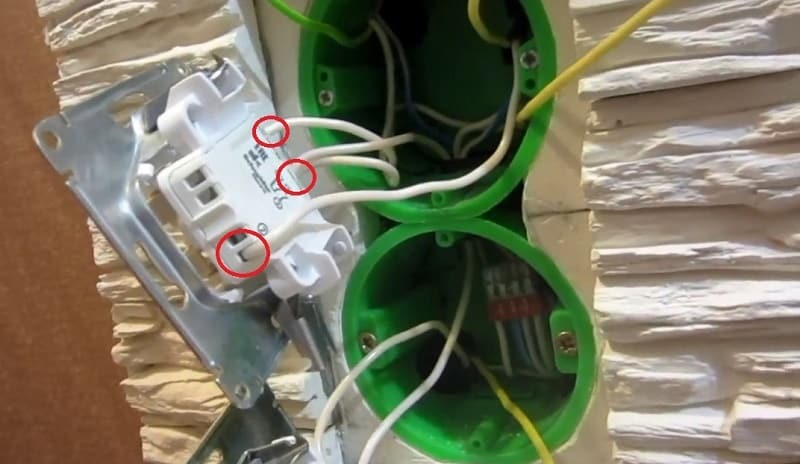Correct and tastefully selected lighting in the kitchen-living room makes the room harmonious, comfortable for both work and relaxation. It also smoothes out the geometric imperfection of the room, sets accents, creates a suitable atmosphere for eating, communicating, relaxing, cooking. For combined rooms, this issue is especially important, because with all the desire, one chandelier cannot be dispensed with in any way.
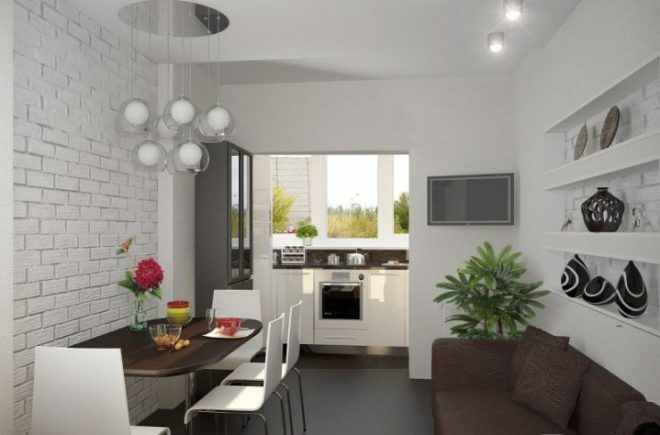
Types of lamps for the kitchen combined with the living room
To illuminate the living room kitchen, you can use any lamps and chandeliers - pendant and spot models, wall sconces, table lamps, floor lamps. When using a kitchen combined with a living room, remember that during the cooking process, the air becomes humid, contains small particles of oil and dust. They can settle on all surfaces and objects. Therefore, it is better to choose materials for the lampshades so that they can be washed. Optimally - glass, plastic, metal. Products made of fabric and wood must have additional impregnation to protect them from dirt.
Attention! Earned on our website kitchen designer. You can familiarize yourself with it and design your dream kitchen for free! May also come in handy wardrobes designer.
The choice of luminaires depends on the tasks that they have to solve. For high ceilings, massive multi-level chandeliers are suitable, for low ceilings - a row of sconces on the wall with upward light. For low ceilings, flat ceiling lights or recessed models (not space stealing) can be used.
The easiest way is to combine lamps of the same shape in the interior. Shades of different shapes are also suitable if they are made of the same material. Glass and metal get along well. It is desirable that the color of the metal matches the equipment available in the kitchen. This can be easily achieved using steel, aluminum, chromium.

When choosing colored plastic or glass, the combination of shades is important. Point models and lamps with shades made of glass or white plastic and regular geometric shapes can be considered almost universal. They can be combined with classic, modern and most daring chandelier shapes.
Features of planning lighting in the kitchen
To get a good result, you need to think over all the details in advance: compatibility in style and color with other elements interior, the location of functional areas, the exit points of wires, sockets, the number of lighting devices, their type and brightness.
The lighting of the kitchen-living room should provide good visibility in those places where a person is most often (work and dining areas). The diffused light is given by a chandelier or spotlights, evenly distributed over the ceiling. Where brighter lighting is required, additional local sources are installed.
Lighting greatly affects the perception of the kitchen. If you need to visually expand the room, you can place a row of lamps on the wall instead of the central chandelier. If you narrow it down - mount the light sources in one straight line in the middle of the ceiling.
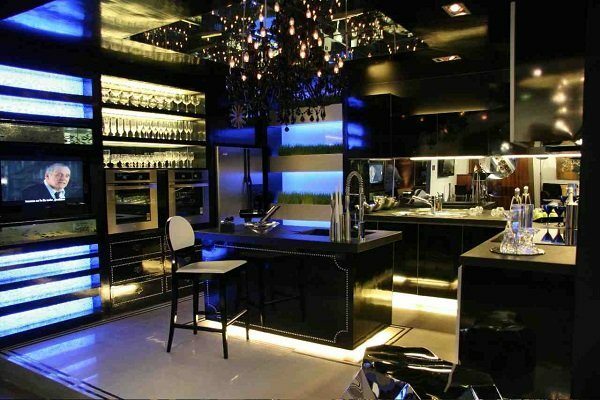
Functional lighting
The days when one large chandelier was installed in the center of the room are over. Today, lighting in a living room combined with a kitchen cannot consist of one lamp. Even in a small room, a single source cannot provide high-quality illumination of the work surface and the entire kitchen space. A large selection of luminaires allows you to select lighting for each zone separately. It is important that there is no dissonance in style between them.
Where food is prepared, good visibility of all details is important. A wall or ceiling lamp is used as background lighting. Additionally, local lighting is organized in the working area. Spotlights are often used.
You can choose overhead models or build them into furniture. When choosing a custom-made kitchen unit, you can mark in advance where the light sources will be located. They are mounted in the upper row of furniture or on the ceiling if there are no hinged shelves. As a rule, the cooker hood is also equipped with such lighting. It will illuminate the area of the stove, but it will definitely not be enough for the entire work surface and sink.
The glass apron with internal illumination and photo printing looks interesting. LED strip can be mounted under the top cabinets, along the wall or under the countertop. The lamps should be positioned so that they are directed to the work surface in front of or above the person, but not behind.
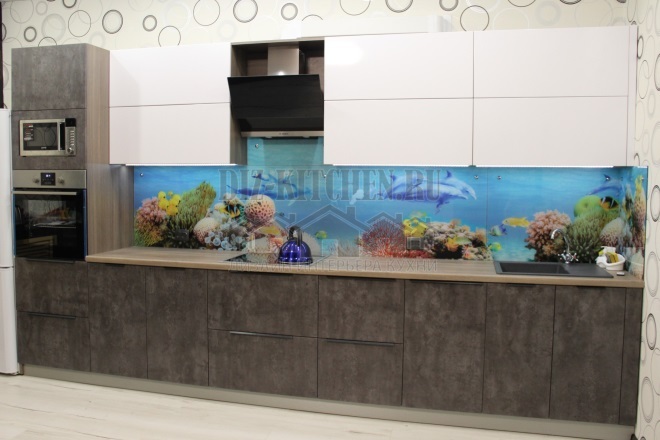
Other requirements for the recreation area. Here, soft diffused light is preferable, which does not hit the eyes. You can hang a sconce on the wall, install several floor lamps, a decorative table lamp.
In the eating area, lighting should also be organized. A chandelier or a row of identical pendant lamps is hung over the table. You can choose a composition of several lamps on one base, a modern floor lamp with a long curved tripod in the form of an arc. If the table is near a wall, wall sconces will do. They can be classic in shape or the most unpredictable, homemade or even assembled from kitchen utensils. It all depends on the style.
The lower the pendant lights are located above the table, the more cozy the atmosphere will be. There are models on sale that you can easily change the level of arrangement, angle of direction of light, brightness.
Both the lack and the overabundance of lighting devices have a bad effect on the perception of the room. Many chandeliers split the space and create a cluttered effect. Therefore, a sense of proportion is important.
Decorative lighting
Decorative lighting of the living room combined with the kitchen will help to make the room more interesting. Often they use the illumination of the facades of the kitchen set. To do this, an LED strip is laid inside along the contour of the glass on the cabinet doors.
Illumination of shelves, niches, wall and ceiling lamps located next to them attracts the eye to decor items, photographs, paintings, vases, compositions of living plants.
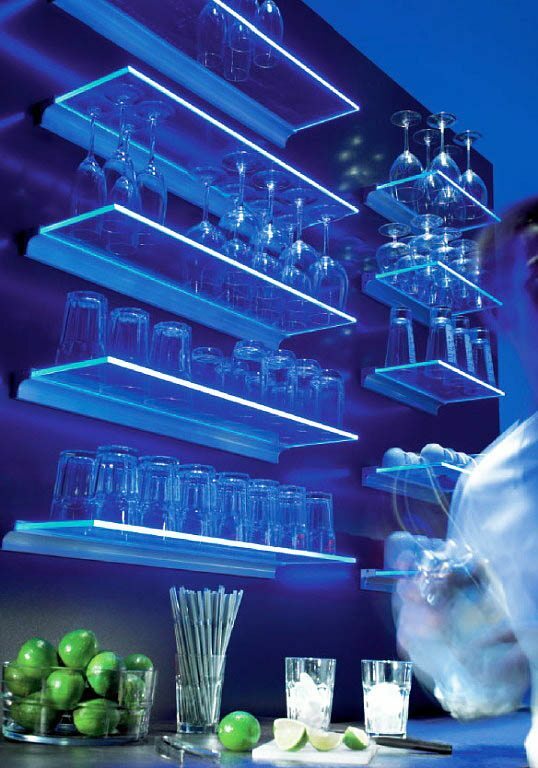
Often, the ceiling is involved in the zoning of a room. Using two levels helps define the dining area and the work area. At the same time, ceiling structures serve as a good place for installing lighting strips. You can achieve the effect of a floating ceiling, illuminated photographic images, and implement interesting design projects.
Calculation of lamp power in the kitchen combined with the living room
In order for the lighting in the kitchen-living room to be beautiful and practical, it is necessary to take into account some technical points:
- Wires, sockets should not be closer than 60 cm from the water source.
- Each zone must have a separate wire outlet and switch. Therefore, you need to immediately plan where there will be a working area, a table for a meal and a seating area, a bar counter.
- The light sources should be no closer than 30 - 40 cm between themselves, and at least 20 cm should remain to the nearest wall.
- It is desirable to maintain symmetry.
- From the lower edge of the plafond to the table or work surface, at least 70 cm.
- If there is a chandelier above the table, its diameter is close to 1/2 the width of the table top.
- In order for the illumination of a rectangular table to be uniform, several lamps can be used at an equal distance, the latter should be 30 cm from the edges of the table.
- Usually, with a room area of up to 25 square meters. two small lamps on the ceiling are enough.
And now about how many bulbs you need for good lighting:
- If you use incandescent lamps, for the kitchen, the calculation is based on the requirements of 12 - 40 W / m2, for the living room, 10 - 35 W / m2 will be enough.
- For daylight sources, you will need 8 - 10 W / m2. in the kitchen, 7 - 9 in the living room or dining room.
- Halogen lamps will provide a sufficient level of light in the work area at 30 - 35 W / m2, and in the rest area - 25 - 35 W / m2.
It is more convenient to cook with lamps that give cold light; warm colors are better in the recreation area. It is also useful to provide for the regulation of the light intensity. The most economical are LED lamps, they give light of white, yellow spectra.
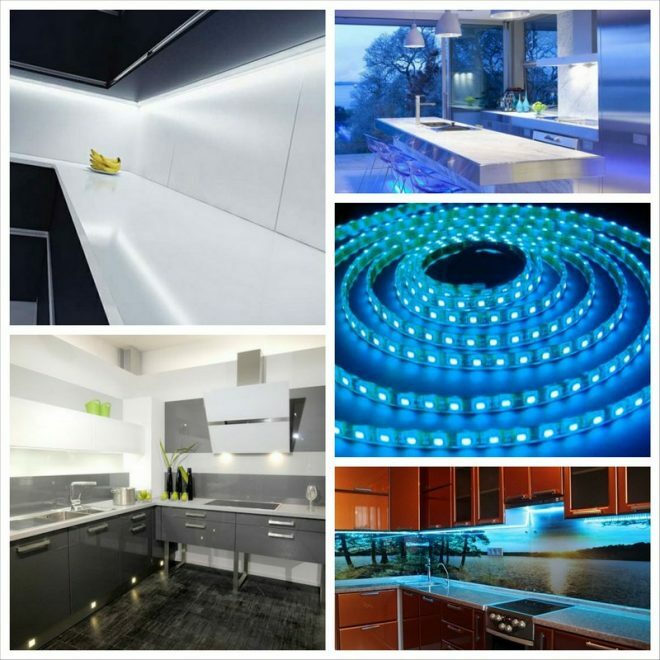
Zoning the kitchen and living room
In addition to illuminating kitchen items and surfaces, lamps help to zone a large room. Together with furniture, different wall, floor and ceiling finishes, they divide the space into sections for different purposes. Usually there are:
- kitchen area with a work surface;
- recreation area - for watching TV, reading, communicating with guests;
- eating area - dining table and chairs where the family gathers every day or on holidays.
If there is not much space, the last two zones can be combined.
Partition
If there is a living room or dining room combined with a combined kitchen, a partition is often installed between them to visually delimit the space. It prevents the spread of odors, eliminates noise, but does not make the space smaller. A glass sliding structure, shelves with flowers, books, decorative utensils can serve as a partition. Such a role can be assigned to a bar counter, plasterboard structures: columns, an arch, a false wall with niches, through shelving.
In this case, the lighting will be very useful, repeating the contours of an arch, shelf or a conditional dividing line between the kitchen zones on the walls and ceiling. For this, an LED strip or spotlights are suitable. If several luminaires are used, they must be of the same shape and equally spaced from each other. Sliding glass partitions and glass block structures are used. They can be illuminated from the inside. It will be especially beautiful if you use stained glass windows.
Light sources are also usually installed above the bar. These can be pendant lights or LEDs.

The simplest zoning methods will be curtains or a portable screen. Depending on their position, the space is combined or divided into zones.
Finishing
The choice of finishes depends on the style of the room. Paint, plaster, wallpaper, wood, stone, plastic will help create the right atmosphere. If the base is made of plasterboard, it is important not to use heavy materials - natural wood, stone, tiles. They can be replaced with a quality imitation.
Light embossed plaster is suitable for a country-style kitchen, Provence, a brick wall will fit into loft space, classics, plastic - in a modern style, minimalism, hi-tech, stained glass - gothic, Art Deco.
Hood in the combined kitchen
It is important that the hood in the combined kitchen is powerful enough to cope with removing odors in a large room. You can calculate the performance of the device if you multiply the area by the height of the room and by the number of air exchange cycles (10 - 12). This will ensure a comfortable stay in the recreation area, even when the process of cooking is in progress in the working area. And of course, ventilate the kitchen to get enough fresh air. After all, modern window structures are airtight and allow little air to pass through.
In a combined room, a small area of the light source in the hood may be enough to illuminate the hob itself and the working area nearby. Moreover, many models are equipped with a dimming function and you can choose at your discretion: today it is a soft twilight, and tomorrow it will work at full capacity.

No matter how you decide to decorate the space of the combined kitchen and living room: keep in the same style or emphasize the uniqueness of each zone separately, skillful use of light will help in achieving this goals.
average rating 0 / 5. Number of ratings: 0
No ratings yet. Be the first to rate.


